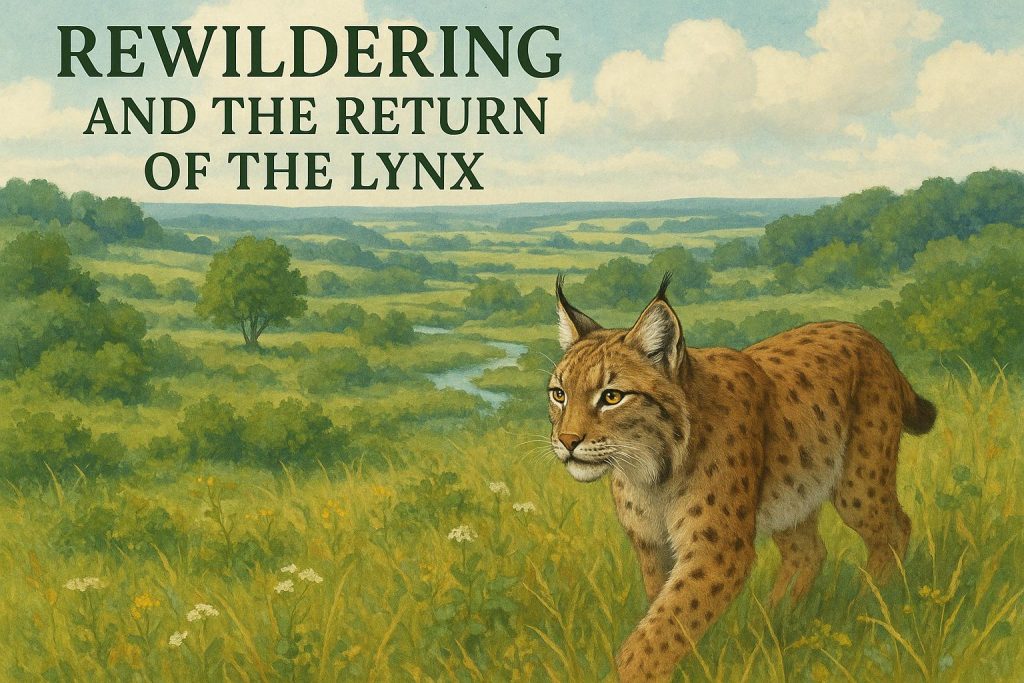
Rewildering and the Return of the Lynx
Understanding the Process and Goals of Rewildering
In the dynamic field of conservation, rewildering, or rewilding, emerges as a transformative approach aimed at restoring ecosystems to their natural states. By emphasizing minimal human intervention, rewildering strives to revive the intricate balance of nature’s processes. The core objective is to revive ecological functions and bolster biodiversity through the strategic reintroduction of keystone species and the reclamation of natural processes. This measured approach can lead to the creation of resilient ecosystems capable of withstanding environmental disturbances.
The Importance of Keystone Species in Ecosystems
Rewildering, at its heart, relies heavily on the reintroduction of keystone species. These pivotal organisms play an instrumental role in maintaining the structural framework and functional dynamics of their native ecological communities. Unlike other species, keystones have a disproportionately high influence on their environment relative to their population size. The absence or decline of these species can ripple through the ecosystem, leading to substantial alterations in community dynamics and ecological functions. Consequently, in rewilding projects, the reintegration of keystone species becomes a foundational step towards ecological restoration.
Reintroducing the Eurasian Lynx: A Case Study
A quintessential illustration of rewildering in action involves the Eurasian Lynx (Lynx lynx), a species that once flourished across wide expanses of Europe before its numbers plummeted due to extensive hunting and substantial habitat destruction. Today, dedicated reintroduction efforts are underway in several countries, such as Switzerland, Germany, and the United Kingdom. As a top-tier predator, the lynx fulfills a significant ecological role, similar to other large carnivores, by regulating herbivore populations. This control helps safeguard plant life and sustains ecological balance, thereby promoting biodiversity.
Understanding Lynx Habitat Requirements for Effective Reintroduction
The successful reintroduction of the Eurasian Lynx hinges upon a comprehensive understanding of its habitat needs. The lynx shows a marked preference for expansive forest habitats, which provide the necessary cover for hunting and reproduction. The species thrives in environments featuring a dense understory and a plentiful supply of prey, including deer and small mammals. Realizing reintroductory success typically necessitates the restoration and preservation of such habitats, thereby ensuring the long-term sustainability of lynx populations.
Addressing Challenges in Lynx Reintroduction Efforts
Despite the ecological promise of lynx reintroduction, several challenges must be navigated to ensure success. Prime among these is the potential for human-wildlife conflicts, notably involving livestock farmers who may see the lynx as a threat to their livelihoods. To address these concerns, comprehensive strategies are indispensable. These may include compensation mechanisms for losses incurred by affected farmers and the implementation of advanced protective measures, such as predator-proof fencing. Beyond logistical solutions, fostering community participation and education is vital. Engaging local communities through awareness programs can cultivate public support and dispel misconceptions about rewilding initiatives, thereby nurturing a harmonious coexistence.
The Broader Implications and Opportunities of Rewildering
Rewildering, particularly the reintroduction of keystone species like the Eurasian Lynx, offers a promising pathway to ecological restoration at multiple levels. By reviving natural interactions and processes, rewilding fosters robust ecosystems capable of adapting to and thriving amidst environmental changes. This process serves not only to restore ecological function but also to enhance biodiversity, which in turn supports ecosystem services crucial to human well-being.
Considering Socioeconomic and Cultural Dimensions
Rewildering extends beyond purely ecological parameter adaptations to embrace socio-economic and cultural considerations. As these initiatives become more prevalent, they present opportunities for eco-tourism and educational activities that can invigorate local economies while fostering a deeper appreciation of nature among the public. However, it remains essential to balance conservation priorities with the socio-economic realities of local communities to ensure equitable benefits and sustainable outcomes.
In conclusion, rewildering embodies a comprehensive strategy for ecological restoration centered on the reestablishment of keystone species and the rejuvenation of natural processes. Through this approach, ecosystems can regain their functional integrity and resilience, supporting a diverse array of life forms characteristic of healthy, dynamic environments. By navigating the challenges and harnessing the opportunities associated with rewildering, societies have the potential to contribute meaningfully to global biodiversity conservation efforts, paving the way for a more sustainable future.